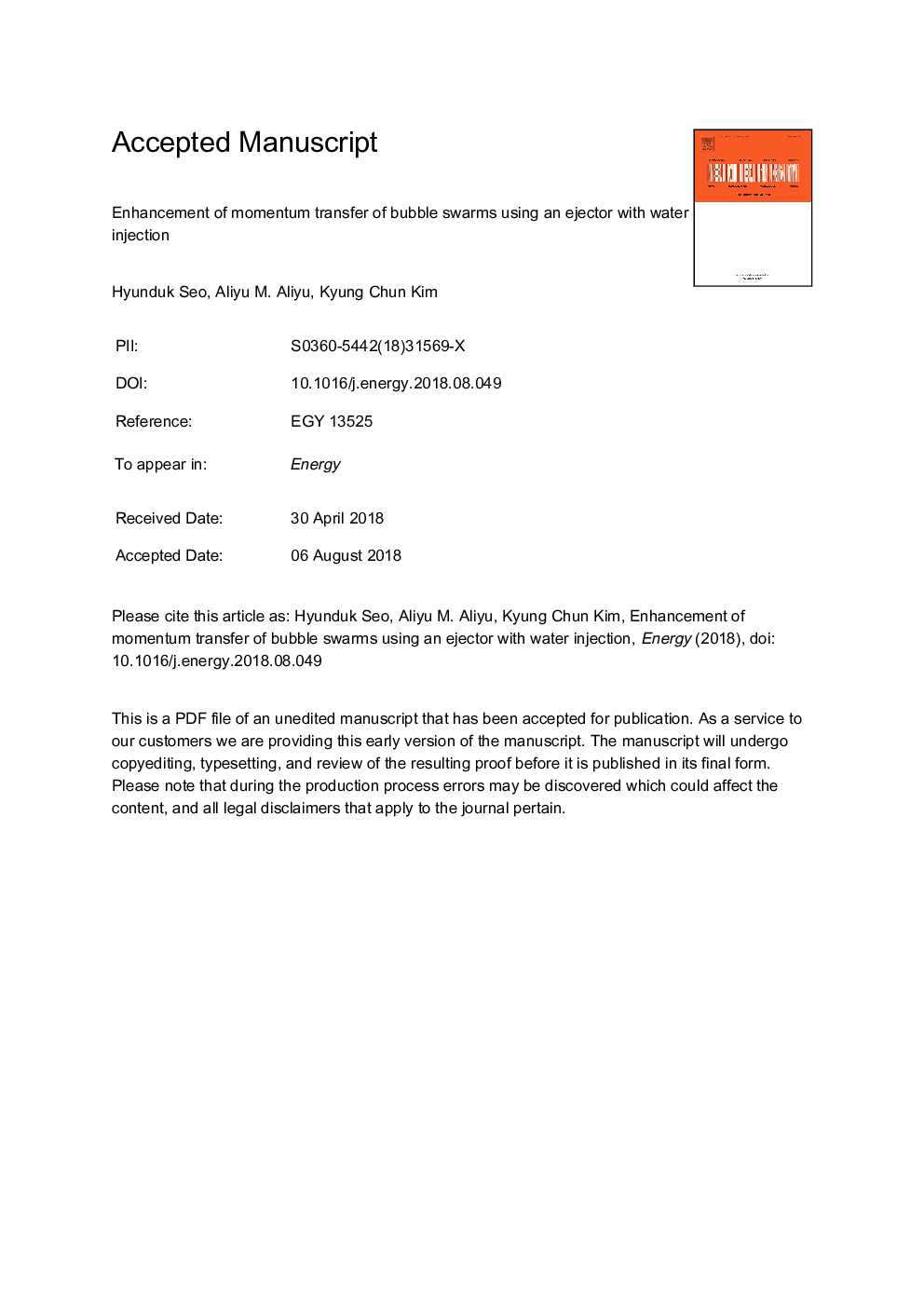| Article ID | Journal | Published Year | Pages | File Type |
|---|---|---|---|---|
| 8070833 | Energy | 2018 | 39 Pages |
Abstract
This paper presents the application and a comparative study of two ejector configurations to enhance the momentum transfer of submerged bubble swarms generated in a water tank. High-speed photography was used to measure the bubble rise velocity profiles and bubble size distribution from captured images. The volumetric flowrate of air was varied from 2 to 15â¯L/min, and water was supplied at 70â¯L/min for the case with water injection. Three different cases were selected to conduct bubble swarm visualization: one with a plain nozzle, one with an air-driven ejector, and one with a water-driven ejector. Buoyancy experiments were also carried out to characterize momentum transfer capability. The plain nozzle and air-driven ejector cases make ergodically large bubbles. However, in the case with water injection, small bubbles were generated through the suction and mixing chamber inside the ejector, and evenly sized broken-up bubbles were produced. Due to the differences in bubble generating mechanisms, there were specific differences in the generated bubble characteristics such that the case with water injection showed significant buoyancy performance in interaction with a spherical model compared to the other cases.
Related Topics
Physical Sciences and Engineering
Energy
Energy (General)
Authors
Hyunduk Seo, Aliyu M. Aliyu, Kyung Chun Kim,
